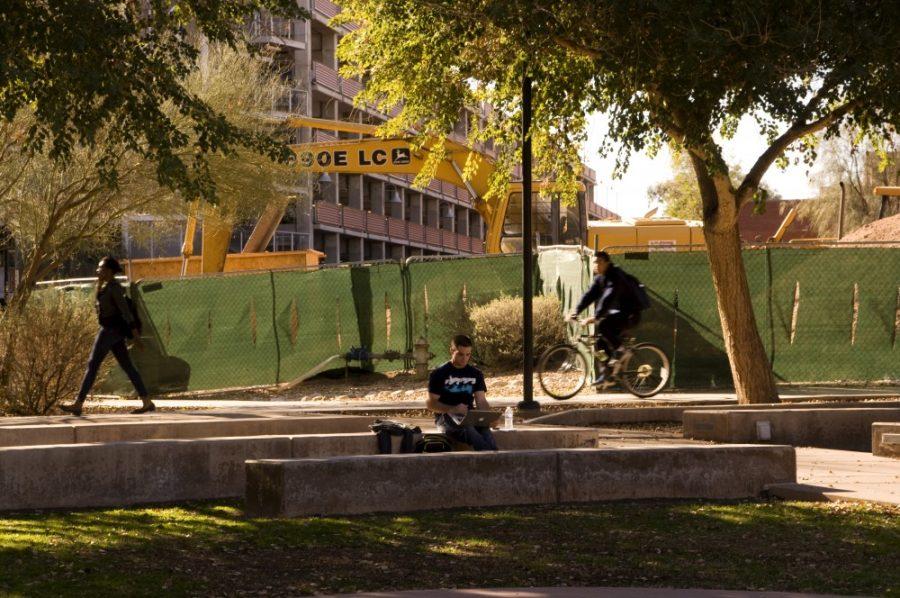Construction near the Math East building and the Highland Bowl will lead to a brand-new home for the Laboratory of Tree-Ring Research by the end of the year.
Once completed, the Bryant Bannister Tree-Ring building will be a three-story structure including new offices, classrooms, laboratories and exhibit space for the Tree-Ring Lab. The construction is currently in the clearing and digging phase, and site was closed off to students beginning in November of 2011.
“They dug a hole and now there is a structure rising out of the ground,” said Tom Swetnam, director of the Tree-Ring Lab. “Because of this, we are calling it a treehouse. It’s also designed in a way that fits the contour of a tree.”
For 75 years, the Laboratory of Tree-Ring Research has had a temporary location inside of Arizona Stadium, and later on expanded some of its offices to the basement of the Math East building. Swetnam said the plan of the new building is to eventually stage out all of the current tree-ring facilities on campus into one centralized location.
“We needed a new home for quite a while because we have outgrown the stadium location,” Swetnam said. “The reason we are able to do this now is because a generous donor gave us a fair amount of funding to make this happen.”
The donor, Agnese Haury, provided $9 million to build a new home for the lab. Haury, along with her late husband, Emil Haury, have been involved with the UA since the 1930s when Emil Haury was a graduate student working in the Tree-Ring Lab, according to Swetnam. An additional $3 million in funding was provided by the UA. The current cost of the project is $12,039,000, which is estimated by the UA’s Department of Planning, Design and Construction.
The Bryant Bannister Tree-Ring building will be an addition to the Math East building and will double the size of the existing building, according to Christ Kraft, the facilities project manager. Some sides of the Math East building have been dug up to accommodate the new structure.
“Like everything else, we need to build strong foundations to ensure the rest of the structure is secure and stable for the life of the facility,” Kraft said.
In addition to brand-new facilities for its research, the department will also host its first tree-ring exhibit on the ground level of the building. The exhibit will be free to the public, and will include tree-ring specimens from around the world. One of the permanent features in the exhibit includes a 10-foot cross section of a sequoia tree trunk, which is currently housed at the Arizona State Museum.
“No one has seen this sequoia disk in the last 20 years,“ Swetnam said. “In addition to this, we are going to have samples from the world’s oldest tree that are almost 5,000 years old.”
Swetnam also said the new building will provide the Tree-Ring Lab a chance to expand and host more researchers. And even though the building has not been completed, it has already helped the department secure external grant funding from the National Science Foundation, he said.
“As soon as the building is constructed, we will have several new scientists coming from Cornell University to do research with us on tree-rings and archeology,” Swetnam said.
People who are interested in the building process can watch a live stream of the construction site on the UA’s Planning, Design and Construction
website.








